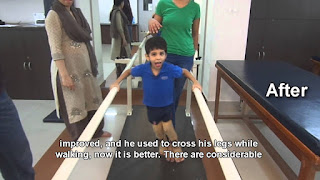The symptoms of cerebral palsy are varying child to child depending on the injuries. This condition occurs due to some damages in the brain which control the motor function of the body. It mostly occurs during, before after the period of birth. Its symptoms are not easy to find at the time of birth it takes 2 to 3 months. This is a permanent condition that restricts the normal development growth of the child and their posture. These symptoms have a wide range of problem with child fine motor skills for example writing, walking, crawling, standing etc.
In every cerebral palsy case, specialist always finds a problem in skeletal and muscular development. Those babies born with a severe cerebral palsy condition they do not have normal postures. This condition certain of body either moveable or not, it depending upon the condition of severity. Some symptoms may change as the grow in their age. In some babies, these symptoms can't show immediately and takes 9 months to 1 years to show complete signs and symptoms of cerebral palsy.
Other cerebral palsy symptoms may include epilepsy and communication as well as the speech disorder. Sensory impairments, Eating disorders, mental retardation and behavioral disorders are additional symptoms of cerebral palsy. A person who is usually slurred sound affected has very frustrating symptom of CP. Another common symptom is uncontrollable trembling of the limbs on one side of the body is know as the hemiparetic tremors. It is very serious impairment of movement. In this cerebral palsy condition, muscles will become rigid and can not stretch well. It usually affects the arms. Another common symptom is difficulty swallowing. People with cerebral palsy, to control the problems about the movements of his tongue and mouth have problems eating.
Mostly cerebral palsy signs and symptoms are not detectable, sometimes until the child reaches a certain age. So, we need to wait for those symptoms and better diagnosis of cerebral palsy children.
